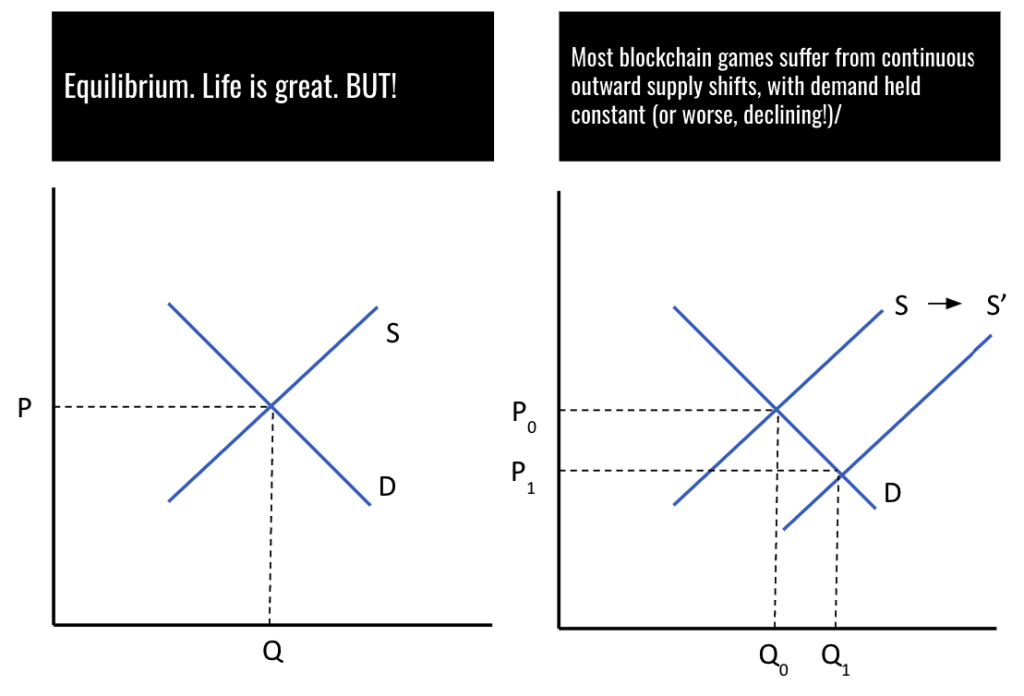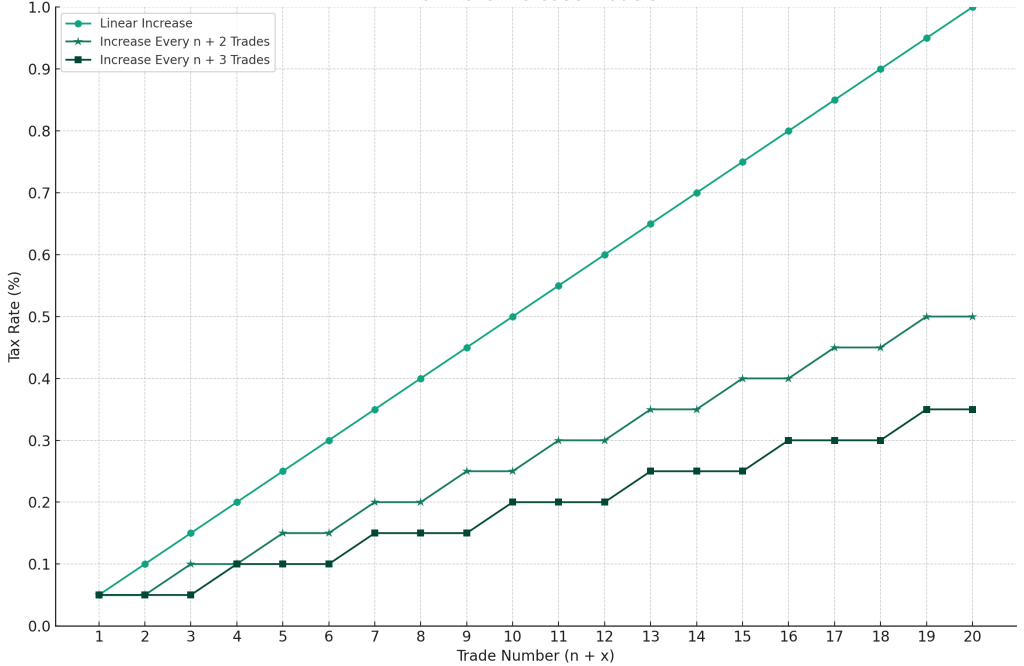
How to Solve “THE” web3 Problem: A Staircase Tax
Journal 4 Phillip Black January 2

MMOs and most web3 titles suffer from a fundamental design flaw: capital depreciation (or lack thereof). The result is a Zimbabwe-style hyperinflation economy so prevalent Redditors plead to find an MMO that hasn’t suffered. Even EVE Online, with its own Head Economist 1. suffered inflation bouts. It’s a looming threat to the web3 space, only mitigated by the fact that web3 games haven’t survived long enough to grapple with it. Luckily, there’s an answer that combines the best solutions from MMOs with the “permanence” soul of web3: a staircase tax.
Reddit Find Friedman in All the Unexpected Places

Gold Farmers Always Win

As Milton Friedman reminds us, “Inflation is everywhere, and always a monetary phenomenon,” a principle that extends to MMOs. When players generate or mine assets, holding all else constant, the supply curve moves outward, and price falls. With enough time, price converges to $0. Axie Infinity saw its NFTs’ reproduction rate exceed one, leading to a surplus that drove prices down.
The Supply Problem

Real-world goods suffer a similar fate but benefit from capital depreciation. Wearing a T-shirt repeatedly degrades the quality and changes the nature of the good; it becomes stained, stretched, and shrunk. Holding all else constant, producers maintain price equilibrium by equating the supply of the good with the rate of capital depreciation. The circulating supply of T-shirts remains constant if five wear out and five are sold yearly. This isn’t the case with digital goods – a Taylor Swift song .mp3 is the same on the first listen as the millionth.
MMOs have historically dealt with the problem of inflating supply by introducing ‘durability,’ where items wear out and become unusable after repeated use. For example, in World of Warcraft, players slay monsters, collecting items and currency. Since these items are tradeable, each time a monster is slayed, the global supply of the items the monster drops increases. Supply is, therefore, a function of drop rates, monster respawn time, and the quantity of players. Players must sink currency to repair the item, which shifts the supply curve inward. While durability balances the economy spreadsheets, players may find constant repairs as convenient as frequent stops at the gas station. A staircase tax avoids item consumability while removing the item from market circulation.
Sadly, No Premium Gas Available

A staircase proposes an escalating tax rate on a given item at every n+x trade. For example, an item might start at a 5% tax rate, but after the second trade, the tax rises to 10%; after the 3rd trade, it rises to 15%…, and so forth, until it reaches 100%. At a 100% tax rate, the item is effectively soulbound. The tax could take on several designs: increasing at a fixed or set rate or changing the number of trades that trigger a tax increase.
Example Staircase Tax

The item becomes less likely to be traded at each trade, gradually removing it from circulation while maintaining utility. To maintain price stability, these need to be set in such a way as to counteract the rate of new supply.
A staircase tax isn’t only for web3; it’s something any game with tradeability should consider. By escalating taxes on successive trades, this mechanism simulates the real-world principle of capital depreciation without resorting to the unpopularity of item durability or the design quagmire of destructibility. More work is needed to determine the “optimal” set of staircase variables, and if web3 lives long enough, it might be able to tell the tale.
- The monthly economic EVE reports are too much fun. They’ve been around for over a decade. Four CPIs!







